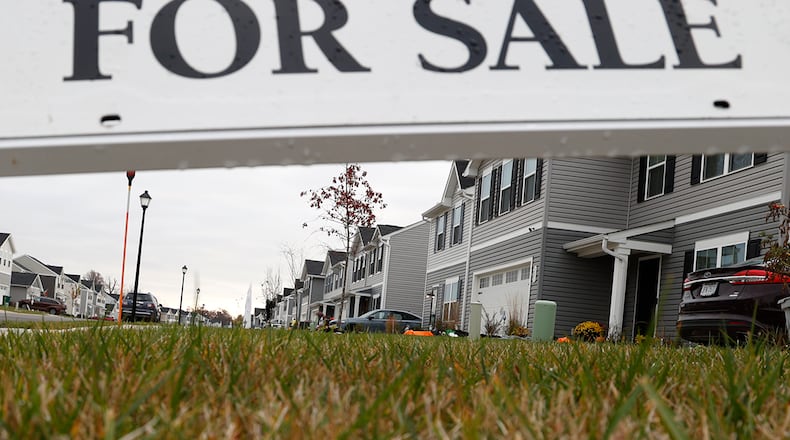“It’s still definitely a sellers’ market. Things are still selling fairly quickly,” said Gaier. “We’ve seen a lot of craziness in the last two years, but I think it’s softened a bit in that aspect.”
The average 30-year mortgage rate jumped to 7.08% from 6.94% last week. Last year at this time, rates on a 30-year mortgage averaged 3.14%, according to Freddie Mac.
According to Ohio Realtors’ September home sales report, a total of 4,296 homes were sold in the region that contains Clark, Miami, Champaign, Logan, Shelby, Auglaize and Mercer counties from January to September of this year. This was a slight drop from the 4,329 homes sold in the same time frame last year.
Meanwhile, the average sale price for that same region reached $215,722, which was up 3.4% from September 2021′s average, according to Ohio Realtors.
Warning signs exist, however.
Roughly 95 Springfield-area homes were sold in September, a 32% drop from the same time last year. But to date, there isn’t a difference between the number of houses overall sold in Springfield from 2021 to 2022, according to Realtor Sunny Dhingra.
The summer months saw fewer home sales in the city, too, compared to last year. That decline was influenced by an unavailability of inventory, Dhingra said.
“Springfield will be OK,” Dhingra said, “but it’s going to get worse before it gets better. Our salvation will be people coming from other cities.”
Despite the changing market, people are still looking to buy homes in the Springfield area, Gaier said. She described local housing as a sellers’ market given the smaller number of available houses to sell in the city.
“I have buyers that I can’t find what they’re looking for. Now, I can help increase inventory by listing their house if I can find somewhere for them to move… it’s kind of a Catch-22″ Gaier said.
Gaier said although interest rates have increased, benefits to homeownership have not changed. For instance, homeowners build equity and are eligible for some tax benefits. In addition, the cost of a mortgage may be cheaper than monthly rent in the city.
“The Ohio housing marketplace is undoubtedly undergoing a shift, as rising interest rates is resulting in a reduced pace in sales activity among would-be buyers,” said Ohio Realtors President John Mangas said in a statement. “We are experiencing an uptick in homes listed for sale in many areas, which should expand housing opportunities as we return to a more balanced, stable market condition.
“The continued rise in average sales price reflects an understanding among consumers that housing in Ohio is a smart, long-term investment,” Mangas said.
Higher mortgage rates reduce homebuyers’ purchasing power, resulting in fewer people being able to afford to buy a home at a time when home prices continue to climb, albeit more slowly than earlier this year. The combination of higher rates and home prices means a typical mortgage payment for a homebuyer is up hundreds of dollars compared to what it was earlier this year.
The last time the average rate was above 7% was April 2002, a time when the U.S. was still reeling from the Sept. 11 terrorist attacks, but six years away from the 2008 housing market collapse that triggered the Great Recession.
Meanwhile, some homeowners have held off putting their homes on the market because they don’t want to jump into a higher rate on their next mortgage.
But in Springfield, the biggest factor keeping potential sellers from putting their houses on the market locally is the inability to find their next living space.
“Not everybody can buy without selling,” Gaier said. “Some people might not qualify to carry two mortgages or do a bridge loan.”
Interest in living in the Springfield area has not wavered with the rise of mortgage rates, however. Gaier and Dhingra said potential buyers outside of the city, particularly people from the Columbus-area, are looking to the Springfield area for its amenities and proximity to major highways and large employers.
“We have a really good quality of life here, and I think once people delve into what Springfield really has to offer, they’re genuinely surprised about our amenities,” Gaier said.
The Associated Press contributed to this report.
By the numbers:
7% - Average US mortgage rate
95 - Springfield-area homes sold in September
$260,232 - Average Ohio home price
Source: Springfield Realtors, Ohio Realtors


